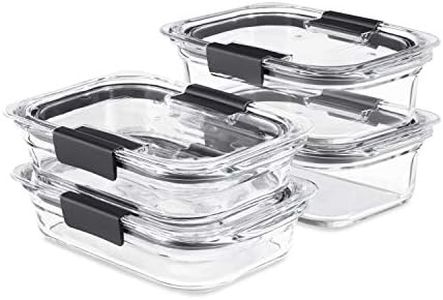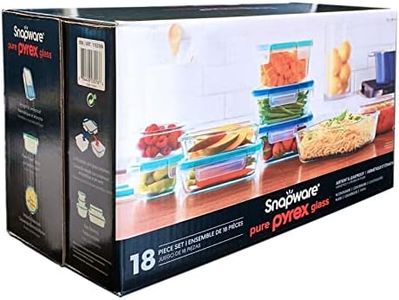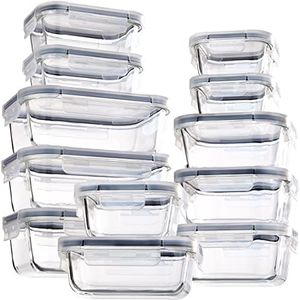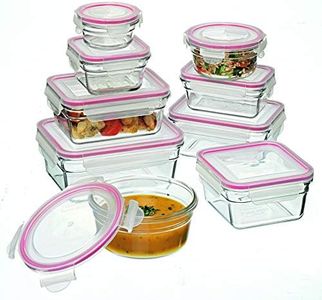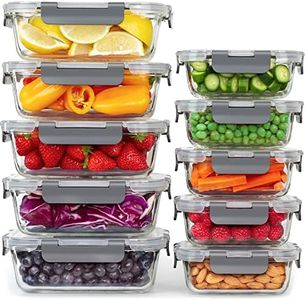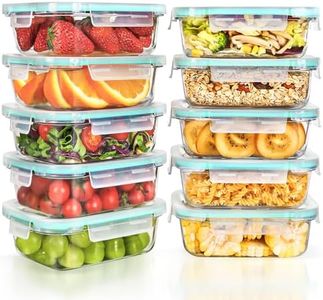We Use CookiesWe use cookies to enhance the security, performance,
functionality and for analytical and promotional activities. By continuing to browse this site you
are agreeing to our privacy policy
10 Best Glass Containers
From leading brands and best sellers available on the web.Buying Guide for the Best Glass Containers
When shopping for glass containers, it’s important to focus on how you plan to use them. Are you looking for food storage, meal prep, pantry organization, or maybe for serving and reheating? Not all containers are made alike, and understanding their specific features can help you pick the best ones for your needs. Consider factors like size, shape, seal quality, durability, and temperature resistance. By matching these features to your intended use, you’ll find containers that keep your food fresh, safe, and easy to handle.Material QualityMaterial quality refers to the type of glass used in the container. Good quality glass is durable, non-porous, and resistant to cracks. Some containers are made of tempered or borosilicate glass, which handle temperature changes better and are less likely to shatter. Everyday glass containers may be more affordable but might not withstand thermal shock as well. If you plan to use your containers in the oven or microwave, opt for higher quality glass that is specifically labeled as heat resistant. For simple cold storage or pantry use, regular glass is often sufficient.
Size and CapacitySize and capacity refer to how much each container can hold. Containers come in many sizes, from small ones that hold a sauce or a snack, to large ones for leftovers or meal prepping. Small containers are useful for baby food or salad dressings, medium for individual meals, and large for batch-cooked dishes. Think about the portion sizes you typically store and whether you need a variety of sizes for flexibility.
ShapeGlass containers are available in various shapes such as round, square, and rectangular. The shape affects both storage and use: rectangular and square containers are space-efficient for stacking in fridges or cupboards, while round containers are handy for mixing and serving. If you need to maximize space, choose more rectangular or square containers; if you mix or serve food from the container, round ones may be more practical.
Lid Type and SealThe lid and its seal are crucial for keeping food fresh and preventing spills. Some lids have simple snap-on mechanisms while others feature rubber or silicone gaskets for airtight and leak-proof performance. If you transport food or store liquids, look for leakproof lids. For pantry storage or foods with strong odors, airtight seals are best. Simpler lids are fine if you're storing items that don’t require a tight seal.
Temperature ResistanceTemperature resistance is the ability of the glass container to handle extreme temperatures, like those in an oven, microwave, freezer, or dishwasher. Some containers are designed only for fridge storage, while others can go directly from freezer to oven. If you want to cook, freeze, or microwave food in your container, look for those marked as oven-safe, freezer-safe, or microwave-safe. Always double-check the manufacturer's guidelines before switching between temperatures.
Ease of CleaningEase of cleaning refers to whether the container and lid can be washed by hand or in a dishwasher. While most glass bodies are dishwasher safe, some lids may warp or lose their seal in high heat. If you want hassle-free cleaning, pick containers where both the base and the lid are dishwasher safe. For certain sticky foods, containers with wider openings are easier to clean by hand.


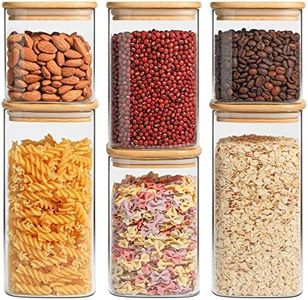
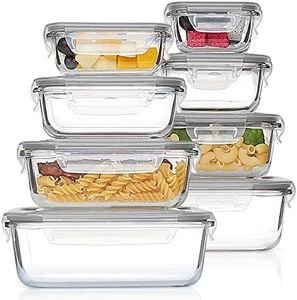
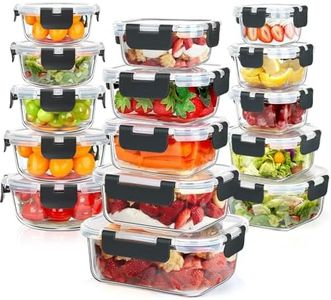
![GOOD FOR YOU Glass Meal Prep Containers - [5 Pack] - Glass Storage containers, airtight - Food prep containers with lids - Glass Food containers with lids - Glass Lunch Box](https://images-proxy.bestreviews.guide/H2Spe9wZU7ay1ZnE9kLdZHbPndI=/0x300/https://m.media-amazon.com/images/I/51G3pRfECvL._AC_CX679_.jpg)
